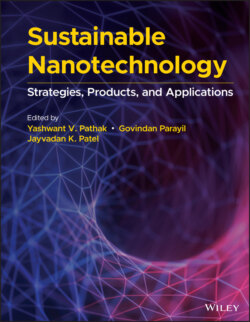Читать книгу Sustainable Nanotechnology - Группа авторов - Страница 29
1.3.3.2 Active Packaging
ОглавлениеIn active packaging systems, food products, packaging materials, and the environment are interacting together to extend the shelf life, quality, and safety of the products [85]. Active packaging systems can be categorized as scavengers, blockers, releasers, and regulators [84]. The focus here is to protect the food products from harmful microbes [90], excess moisture [91], and excess oxygen [92]. Active antimicrobial packaging systems are combinations of antimicrobial agents and nanomaterials. For example, antimicrobial nanofibrous films of polyvinyl alcohol‐b‐cyclodextrin with cinnamon essential oil performed well in suppressing the growth of Staphylococcus aureus and Escherichia coli [93]. Substitution of cinnamon essential oil with lemongrass and oregano essential oils exhibited suppression of Salmonella enteritidis in ground beef placed in a sterile plastic bag for six days [94]. For reduction of the rate of oxygen transmission, ascorbic and iron powders or copper chloride can be used as catalysts for oxygen scavenging thermoplastic starch films. This method reduces the oxygen transmission rate from 20.9% to 1% in 15 days at 80% relative humidity (RH) [93]. Additionally, for the modification of atmosphere packaging, oxygen scavenging polyethylene terephthalate (PET) films, PET‐aluminum oxide coatings, polylactic acid films, and oriented polypropylene (o‐PP) films were deposited with palladium layers through vacuum deposition on the silicon oxide layer. This method was also able to significantly reduce the oxygen transmission rate [91]. Similarly, low‐density polyethylene (LDPE) films combine with activated carbon and sodium erythorbate exhibited the oxygen concentration absorbance rate of 80% [92].
